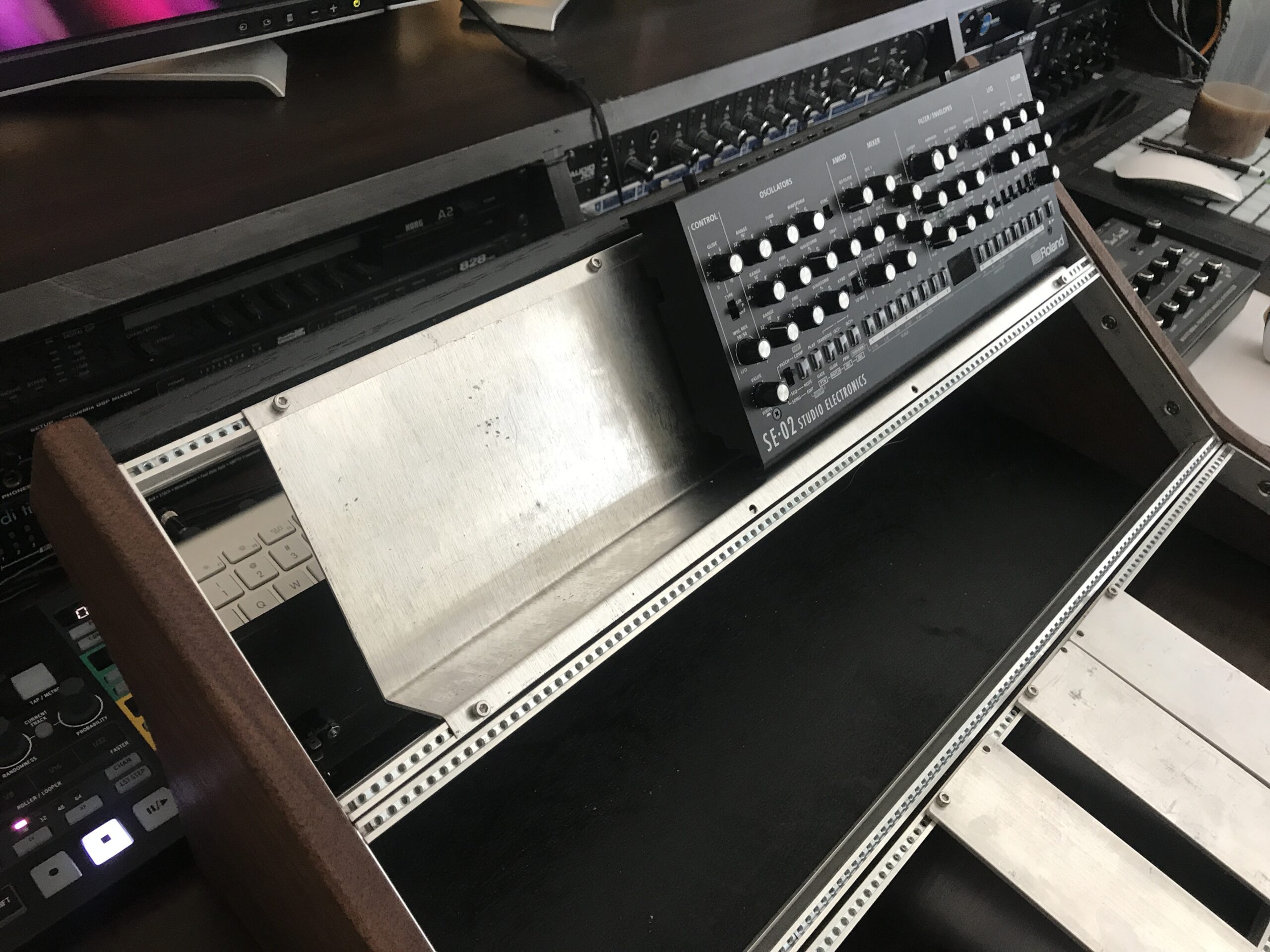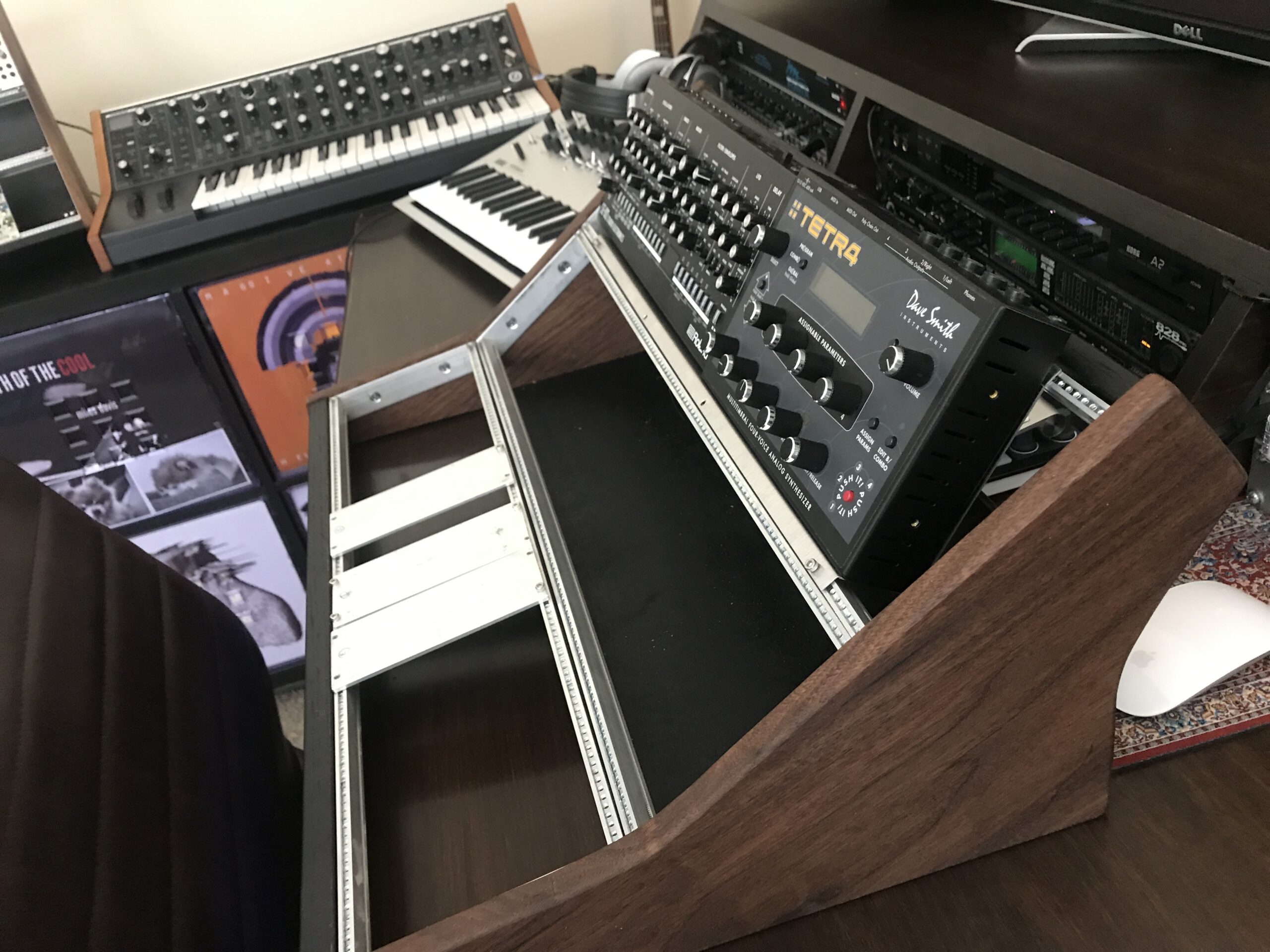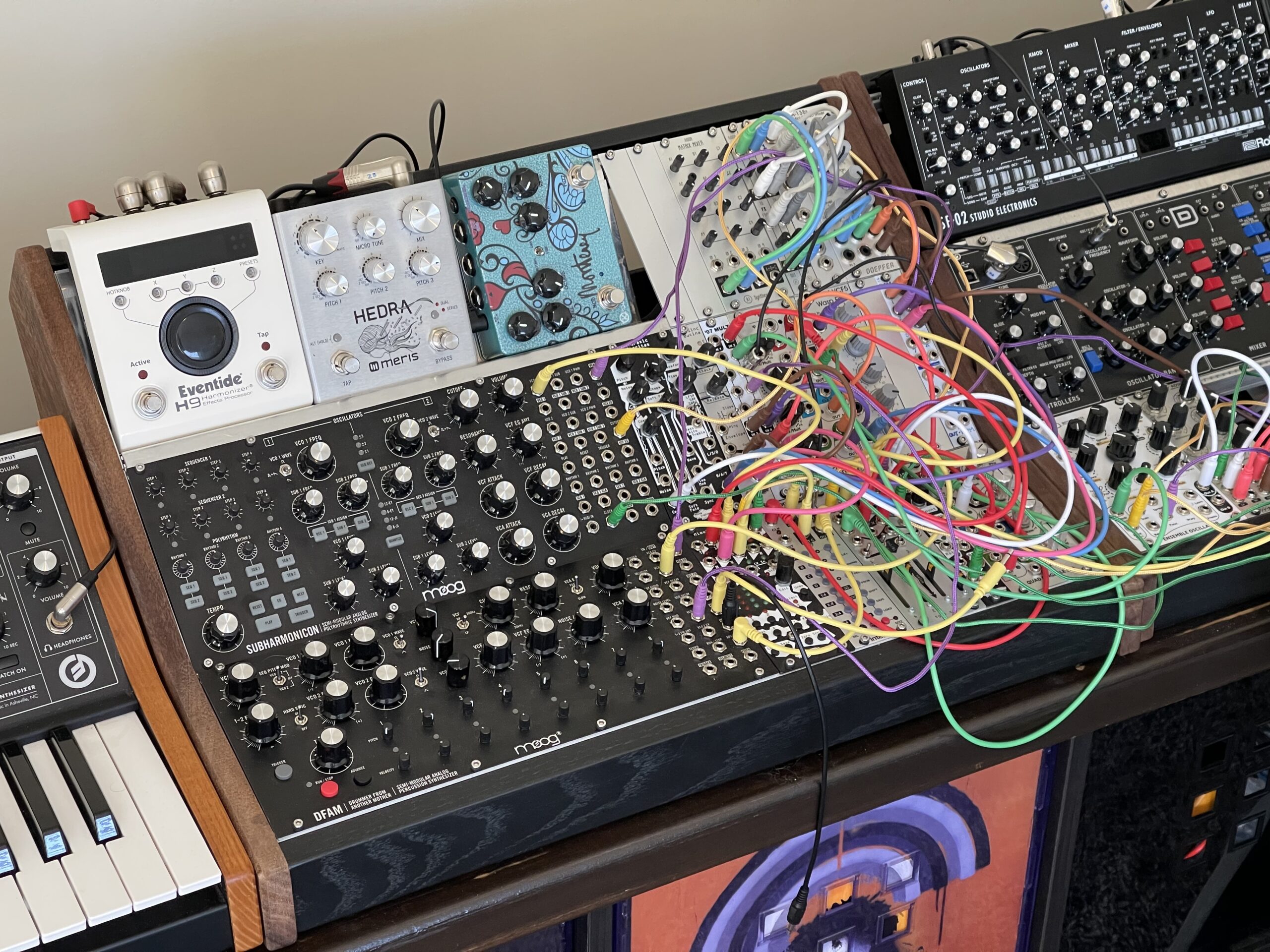This is the final entry in my first adventure in building a custom Eurorack modular synth case. Go back Part 1 – The Design, Part 2 – The Woodwork, Part 3 – The Assembly, or Part 4 – The Power Supply, or skip all this process garbage entirely and cut right to what this dang thing sounds like.
OK, we have a (probably) working power supply but now we have to have to actually hook decently expensive things up it and hope they don’t let any magic smoke escape. Let’s do it.
We start with the sacrificial lamb….my new Quad Clock Distributor from 4ms. I probably should have tried a $30 throwaway module first, but this one had visual features and feedback that I could use to confirm everything was working as expected, plus I felt pretty confident that voltage, current, and craftsmanship was pretty good on this thing.
YES! It works! It’s alive! Now lets hook up some stuff and start making science fiction soundtracks!!!!
The finished article, with the Moog Subharmonicon and DFAM, some Noise Engineering modules, and some 4ms modules mounted and running:

But you must be curious…..WHAT IS THIS ALL FOR? What does this sound like? What does any of this have to do with music? How do knobs and cables even MAKE music?
Well, check out my first patch with this thing here!
This whole project got started because I wanted a convenient way to anchor my Behringer Model D, Studio Electronics SE-02, and Dave Smith Tetra into a case instead of loose on the desktop. After researching and discovering Behringer’s compatibility with eurorack (and also at the time thinking I’d want their Pro-1 clone) the case design shifted to eurorack format, and that’s how I fell head first into eurorack.
Anyway, I made a convenient eurorack shelf for the Tetra and SE-02 by bending aluminum sheets from Lowe’s and carefully measuring angles….it turned out pretty nicely:



Then, I realized “Hey I have all these guitar pedals, I should build a shelf so I can work them into the signal flow with a signal level converter (I used AISynthesis’ DIY Pedal Send Return Module) and have a convenient place to sit them!”. That idea also worked out pretty well:
